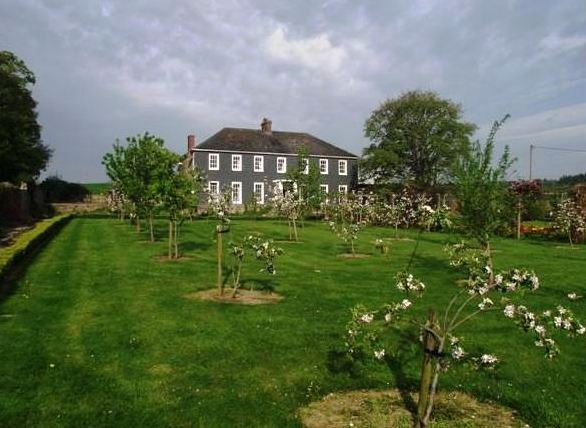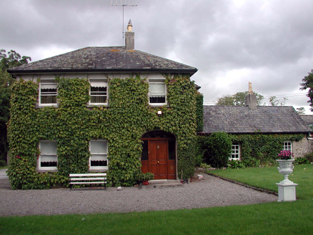Coole
Houses within 5km of this house
Displaying 15 houses.
Houses within 5km of Coole
Displaying 15 houses.
| House name | Description | |
|---|---|---|
| Knocklofty | A mainly 18th century house, cited by Wilson as the seat of John Hely Hutchinson in 1786. In 1840 the Ordnance Survey Name Books describe it as "spacious and handsome, having a fine plain front". It was valued at £70 in the mid 19th century, the seat of the Earls of Donoughmore until 1983, though Walford mentions Samuel H. Goold-Adams of Knocklofty in 1885. The Irish Tourist Association surveyor writes that Knocklofty was De Valera's headquarters for a time during the Civil War. Until recently it served as a hotel but in 2013 it was offered for sale. |

|
| Marlhill | This house was the residence of Robert Prendergast in 1814. In 1840 the Ordnance Survey Name Books also record it as his residence under the slightly variant name of Marlow Hill. James Prendergast held the house valued at £12.15 shillings from the Reverend John Bagnell with 182 acres in the mid 19th century [see Bagnell entry in ''Burkes Irish Family Records'']. Home of the Rice family from the 1860s. A building still stands at this site. | |
| New Abbey | In 1786 Wilson refers to New-Abbey as the seat of Moore Cootee. He notes that the house was close to "the great flour mills built by the late Stephen Moore". New-Abbey was occupied by Henry Moore in the mid 19th century and held from Stephen Moore, the buildings were valued at £11.16 shillings. | |
| Salisbury | Stephen Moore is recorded as resident here in 1814 and T. Sadlier in 1837. The christian name of the mother of Stephen Moore was Salisbury. By the time of Griffith's Valuation John Bagwell held the house in fee. It was valued at £18+. Percy Gough of Salisbury, Clonmel, owned 724 acres in King's County in the 1870s. Slater refers to "Inislonagh House" as the seat of Lt-Gen. Sir Charles J. Gough in 1894. Bence Jones writes that this house was leased to J.W. Cleeve in the early 20th century and from the late 1920s to Sir David O'Brien 6th Baronet. |

|
| Oaklands | William Ryal was living at Oakland, Clonmel, in 1814 and Mr Bagwell in 1837. Colonel Phipps was resident at the time of Griffith's Valuation, holding the house valued at £49.10 shillings from John Bagwell. Still occupied as a residence. |

|
| Woodrooff | The seat of the Perry family in the 18th and 19th centuries, Samuel Perry was resident in 1814 and William Perry in 1837 and at the time of Griffith's Valuation, when the buildings were valued at £66+. Samuel Perry was resident in 1906. Bence Jones writes that this house is now mostly demolished. | |
| Ballingarrane | Ballingarrane was originally leased and then purchased in the late 18th century by Solomon Watson, banker of Clonmel. He built Summerville House which later became known as Ballingarrane. W. H. Bradshaw occupied the house in 1837 and John Mulcahy in the mid 19th century when the buildings were valued at £25+ and held from Solomon Watson. The Watsons occupied the house again in the second half of the 19th century and family members were still resident in the late 20th century. |

|
| Glenconnor | This house also know as Larchfield was built by Solomon Watson at the end of the 18th century as a dower house for Summerville (Bence Jones). Leet records Larchfield as unoccupied in 1814. J. Bagwell was resident at Glenconnor in 1837 and Pierce Gough in the early 1850s when the house was valued at £23.10 shillings. Alderman William Byrne of Clonmel was resident here in the 1870s. Additions were made to the house in the 1880s and it was owned by a Colonel George Elliot in the early 20th century who sold it in 1938 to H.J.Cleeve. |

|
| Barn | The seat of the Moore family in the 18th, 19th and 20th centuries. In 1786 Wilson refers to it as the seat of Thomas Moore In 1840 the Ordnance Survey Letter Books note that it had "a garden nursery and ornamental ground". It was held by Stephen Moore in fee in the mid 19th century and valued at £49+. Randal K. Moore was resident in 1906 and Mr and Mrs Murray Moore in the early 1940s when the house contained a very fine library and antique art collection. Barn is still extant. |

|
| Bird Hill | A house located on the outskirts of Clonmel town was the residence of a member of the Taylor family in 1837. At the time of Griffith's Valuation this house valued at £10.12 shillings was occupied by Margaret Cantwell and held from Stephen Moore with 7 acres of land. This house is still in use as a residence. | |
| Kilnamack | In 1849, the representatives of John Greene were leasing this property to Edward Butler when it was valued at £12 11s. Both Wilson and Taylor and Skinner had also recorded it as a residence of the Greene family in the 1780s. It is still extant and in 2013 was offered for sale. |

|
| Whitesfort | At the time of Griffith's Valuation John Norris was leasing this property from the Stradbroke estate when it was valued at £11. Referring to the 1770s Sadleir notes "John White, of Whitefort" who was married to a daughter of Ambrose Lane. It is not named on the 1st edition Ordnance survey map though buildings and a walled garden are visible. The ruins of some buildings remain. | |
| Kilmanahan Castle | Robert Sparrow was leasing this property from the Greene estate in 1850 when it was valued at over £72. It was offered for sale as part of William Greene's estate in July and December 1852. The sale notice includes a lithograph of the castle. It was bought by Alexander Glasgow who sold it on to the Earl of Donoughmore in 1855. Earlier, in 1786, Wilson notes it as the seat of Mr. Greene. In 1837, Lewis refers to it as the seat of Lt. Col. Nuttall Greene. Hussey records Thomas Wright Watson of Kilmanahan Castle in the mid 1870s. In 1906 it was part of th Donoughmore estate and valued at £45. It is still extant. |

|
| Cuckoo Hill | In 1786 Wilson referred to a house he called "Clover-Hill", three miles from Caher, "the seat of Mr. Ryall". He may have been referring to the townland named Cuckoohill which appears on the 1st edition Ordnance Map. A house is present in this townland which is labelled Cuckoo Hill House on the 25-inch Ordnance Survey map of the 1890s. At the time of Griffith's Valuation, this property was leased to Patrick Heffernan by Abraham Riall when it was valued at over £6. A house and farm still occupy the site. | |
| Chancellorstown House | In 1786 Wilson refers to Chancellors' Town as the seat of Mr. Moore. The house and surrounding demesne are shown on the first edition Ordnance Survey map but are not marked on the 25-inch edition of the 1890s. The townland was part of the estate of Stephen Moore at the time of Griffith's Valuation, though the house was leased by the representatives of Joseph Gough to Denis Daly and was valued at £7 10s. Farm buildings occupy the site now. |

